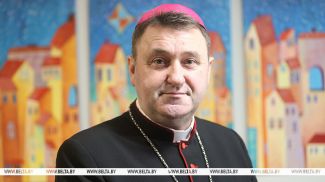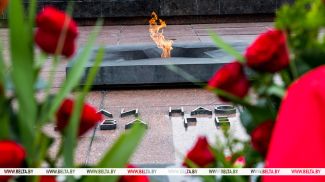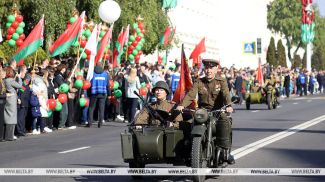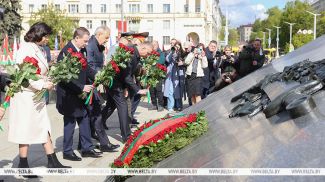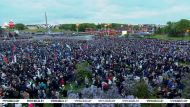MINSK, 20 January (BelTA) – The IAEA SEED mission has worked out recommendations for Belarus and identified the good practices that already exist in the country, reads the press release posted on the IAEA's official website, BelTA has learned.
An IAEA team of experts concluded a five-day Site and External Events Design (SEED) mission to Belarus on 20 January. The SEED team reviewed the design parameters of the nuclear power plant the country is constructing against external hazards specific to the site at Ostrovets. The team also reviewed the authorities' characterization of site hazards and the process for screening them, and exchanged views with the host on challenges related to external events in light of lessons from the Fukushima Daiichi accident.
The team identified the following good practices: a systematic and comprehensive screening of external site-specific hazards on the basis of well-documented criteria; a comprehensive probabilistic safety assessment of both internal and external events, to be delivered by the operator to the regulator as part of licensing documentation in advance of the commercial operation of the plant.
The team provided the following suggestions for improvements: further improve licensing documentation related to information on electromagnetic and lightning hazards, and information on site-specific seismic ground motion; give consideration to future developments of safety improvements related to challenges highlighted in the IAEA Fukushima Daiichi Accident report.
“Nuclear safety is a national responsibility and, by inviting this mission, the Government of Belarus has shown a strong commitment to meet the intent of IAEA Safety Standards in the development of the country's nuclear power program,” said Greg Rzentkowski, Director of the IAEA's Division of Nuclear Installation Safety. “This mission demonstrated that appropriate steps have been taken to establish the design parameters of the nuclear power plant to protect it against the worst credible external event.”
SEED missions are designed to assist Member States at different stages in the development of a nuclear power program. The service offers a choice of modules on which to focus the review, such as site selection and assessment, and the design of structures, systems and components against site external hazards. Apart from this SEED mission, Belarus has hosted other IAEA reviews, including an Integrated Regulatory Review Service last October and an Integrated Nuclear Infrastructure Review in 2012.
In its preliminary findings, the SEED team said the plant's design parameters accounted for site-specific external hazards, such as earthquakes, floods and extreme weather, as well as human-induced events. The team noted that hazard monitoring program, which will be implemented throughout the life cycle of the plant, were adequate and properly documented. Additionally, measures have been taken to address challenges related to external events in light of lessons from the Fukushima Daiichi accident.
The IAEA experts' activities included a review of the operator's Preliminary Safety Analysis Report and supporting documents, in particular sections related to the design basis of the plant and site characterization.
SEED team leader Ovidiu Coman, an IAEA Senior Nuclear Safety Officer, said the Belarusian counterparts cooperated with the review team in an open and transparent manner.
In accordance with IAEA practice, the final mission report will be delivered to the Government within three months. Belarusian authorities have told the IAEA that they intend to make the report public.





